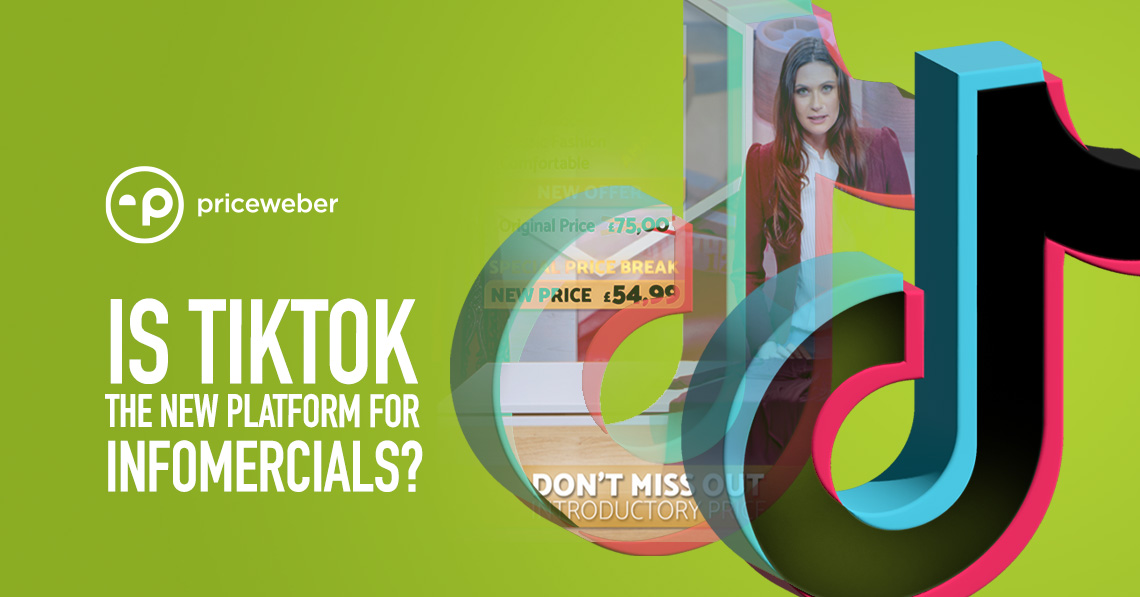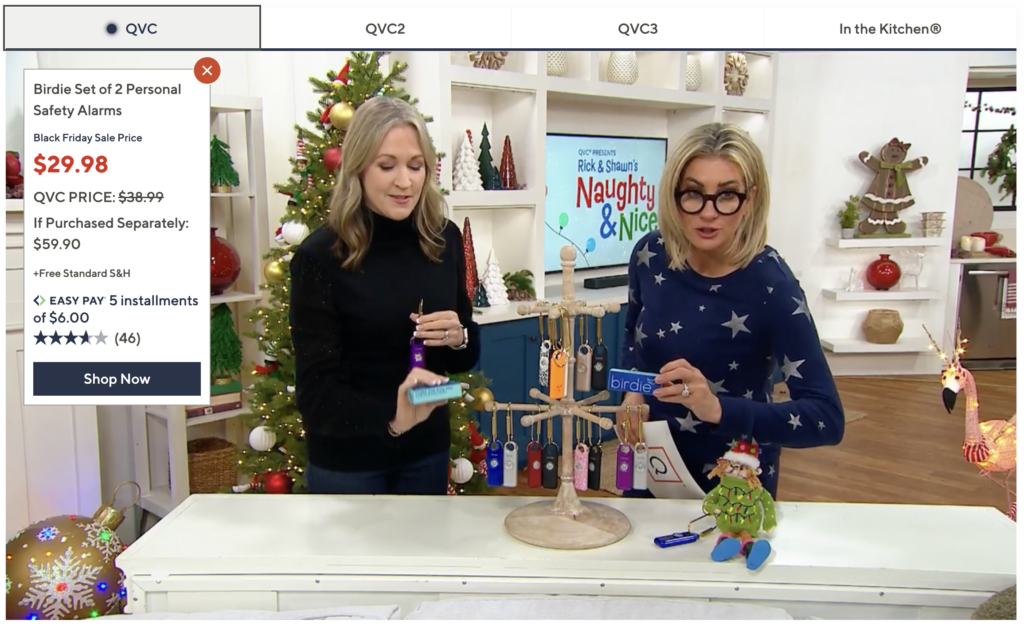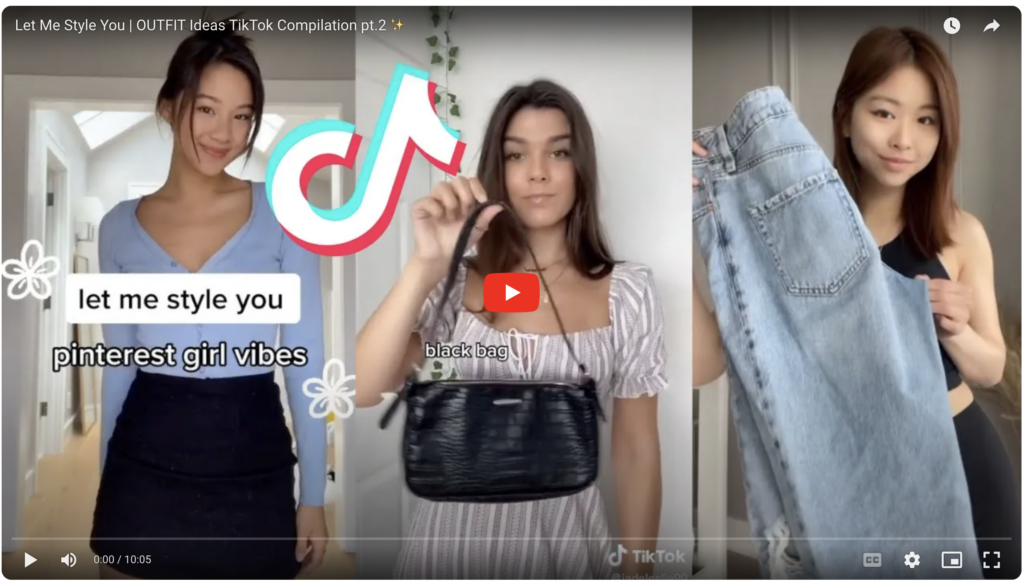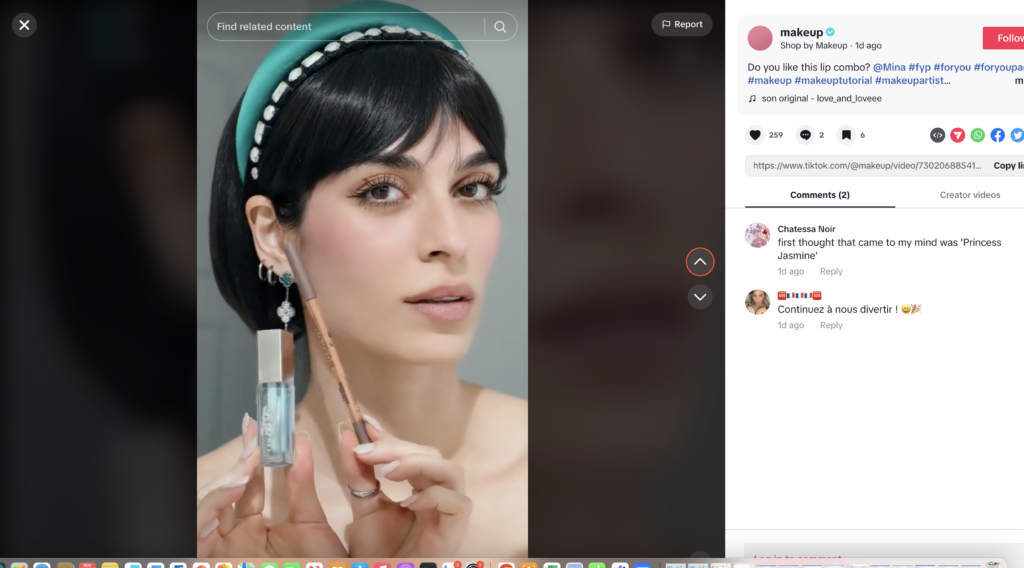You may be as surprised as I was to find out that the infomercial industry is said to have generated nearly $250 billion in sales globally in 2022. In the U.S. alone, infomercial sales are expected to hit $11 billion this year, a 10% increase from 2022.
As a millennial, I don’t watch much terrestrial TV anymore, and I certainly don’t get up and watch it in the middle of the night, which is when infomercials historically (and most reliably) air. Times have changed since my first bout of pregnancy-induced insomnia 10 years ago – now, if I can’t sleep, I don’t have to crawl onto the couch and watch Home Shopping Network on mute. I just grab my phone and scroll through my For You Page (FYP) on TikTok for funny videos or Instagram for trending memes.
With the continued rise and evolution of e-commerce (expected to reach $1 trillion in 2023) and specifically social commerce (roughly 5% of e-commerce sales), why are brands still resorting to decades-old sales tactics when there are so many options to promote their products online and through social? And why is this throwback approach still working for some brands?
In this edition of Plain Talk, we’ll look at old-school infomercials and how you can leverage the same benefits for your brand, regardless of where you advertise.
History and Evolution of Infomercials
Infomercials weren’t a “thing” until the mid-80s. Prior to this, the FCC limited and controlled content (specifically advertising) based on regulations that were established in the 50s and 60s. The Reagan administration set to change that approach with the passing of the Cable Communications Policy Act in 1984. Kevin Harrington, the “infomercial godfather,” realized that there was up to six hours of dead air on networks overnight – broadcast time that wasn’t used by anyone. His first production aired in 1985, and he went on to develop the Home Shopping Network in 1994.
Infomercials became wildly popular because they worked and still work based on the growing sales figures (even though I wouldn’t consider them wildly popular). Despite the still growing potential of infomercials, they only seem to truly impact the same audience they’ve always reached – people who are up in the middle of the night, older generations, skewing female, blue-collar, etc. It’s missing out on the buying potential of both Gen Z and millennials, who hold nearly $1 trillion in buying power combined. Perhaps that’s why, despite a push in 2022 into streaming, Qurate Retail Group (owners of QVC and HSN) just laid off 12% of its staff. Their Q4 2022 earnings fell 13% while e-commerce, social commerce and even traditional retail continue to grow.
Reaching Gen Z and Millennials
So, what is missing from Home Shopping Network and QVC’s approach? We believe the answer is TikTok. Or any social media platform, really. To be fair, QVC and HSN have a lot going for them – industry pros know that both of these networks have built an extremely robust audience because they only push products they have fully vetted. But, as with all things media, if you want to get in front of the right audience, you have to be where they are, and for Gen Z (and, to a similar extent, millennials), that largely means relying on social media.
Looking for recipes or DIY tips? Use TikTok. Outfit ideas? Instagram. Class parties for the kids? Pinterest. In fact, nearly 40% of younger people aged 18-24 skip Google and go straight to TikTok (or Instagram) when searching for new products and information. They rely on their social communities and influencers, both of which are growing in terms of ad spend and revenue year over year.
With a focus on social commerce, more and more businesses are gravitating toward social media to sell their products. Livestream commerce has become extremely popular as brands and small businesses have found a low-cost, low-stakes way to do product demos, establish credibility and thought leadership, and do it at scale. In China, it’s estimated to make up 20-25% of all online sales. Platforms like TikTok have been pushing multi-seller Shop LIVE events, with the Summer Sale event in 2022 garnering over 276 million LIVE views and 135 million views on related hashtags. In the U.S. in 2023, the livestream commerce market is expected to hit $31 billion across all platforms – Instagram, YouTube, and Pinterest – and a much smaller percentage going toward our traditional TV network style HSN and QVC.
This isn’t a debate on livestream commerce vs. traditional infomercials or social media vs. cable TV. It’s not that infomercials don’t work for Gen Z and millennials – it’s that Gen Z and millennials have different customer journeys, and the late-night infomercials and Home Shopping Network aren’t part of it. Social Lives are just infomercials on a different platform. So, what can we learn from infomercials, and how can we apply it to brands?
The Benefits of Infomercials (and Social Media, Coincidentally)
Infomercials work for their respective demographics because they align with their audience’s core values. Social media tends to work for specific cohorts for the same reason. The benefits brands can realize from leveraging infomercials are the same benefits they are finding on social media, but there are also some key differences that are important to keep in mind.
Authentic Brand Experience
- Infomercials: It’s hard to fake results in a live demo. Unlike other advertising, this is a “show, don’t tell” opportunity. If Vince Offer says the Sham Wow will soak up water, it better soak up water (in front of a live studio audience, at that).
- Social Media: The same principle applies to social, but here, it’s influencers who do the showing. Instagram, Facebook and TikTok users crave visual content, and whether you are on the TikTok LIVE section or the #fyp, you’ll see a ton of content showing how well that hair care product works.
- The key difference here is how different generations view “authenticity.” The product better work regardless, but while the live-in-studio demo is often enough to pass the test for older generations, the word “infomercial” is enough to cue the “authenticity” alarm for Gen Z, who tend to see salespeople and paid actors as fairly unauthentic and less trustworthy. This is where influencers come in, as they view their role as having less bias.
Focus on Consumers’ Needs and Wants
- Infomercials: Infomercials work because they introduce people to a product they never knew they needed. The infomercial “host” or “star” is only effective if they can draw a clear line between a pain point and a solution. Jennifer Lawrence’s movie “Joy” from 2015 perfectly illustrates this – in the movie (set in the early 90s), Joy meets a QVC exec who agrees to sell her mops but immediately fails when the celebrity pitchman fails to demonstrate the mop appropriately. Joy gets involved, and the mop sells out. The lesson? Joy focused on all the pain points of other mops and clearly demonstrated how she doesn’t experience those pain points with her product. She used what she knew about the potential consumer to align her product with a specific need and want state. That is the approach that makes infomercials so impactful, convincing people to buy something that they never considered needing.
- Social Media: Brands apply this same approach, and then they align with influencers who have a core community of people with specific needs and wants. If a brand pushes green and eco-friendly products, it aligns with an influencer who shares the same beliefs. The influencer offers their followers a new product or brand that fits their lifestyle and interests.
- The key difference is in how you identify that consumer needs state. Thanks to well-oiled algorithms, TikTok and other social/digital platforms are quite skilled at getting the right message in front of a relevant audience who is most likely to interact with your videos (live or otherwise) and see your products as relevant. With more traditional infomercials, you don’t know 100% who is watching from home, so you are showing the best product features you can, hoping that your message will resonate with enough people. If it’s not, there isn’t much you can do (unless you force QVC to run another segment like Joy did in the movie).
Immediate Call To Action (CTA)
- Infomercials: Filled with “don’t delay” and “but wait, there’s more,” infomercials have a strong and immediate call to action with an added benefit for those who act fast (either adding free products or an added discount). These CTAs have proven successful in driving immediate conversions because no one wants to miss out on the “deal of the century.”
- Social Media: While not all social media placements require quite as strong of a call to action, for direct-to-consumer products, it certainly helps. If you’ve ever inadvertently flipped to the TikTok LIVE section instead of the For You Page, you’ll see very similar “this won’t last long” messaging or special promo codes and free gifts if you act quickly.
- The key difference here is the A (Action) in CTA (Call to Action). With more traditional infomercials geared toward older and less digitally savvy demographics, the action is a quick phone call. For TikTok, it’s as simple as clicking “Shop Now,” which is very appealing to younger, more tech-savvy consumers who prioritize convenience and ease in their buying experience. Aligning with buying preferences is key when deciding how to promote and sell your product.
Memorable Video with Longer Lasting Impact
- Infomercials: According to a well-reported study, viewers retain 90%+ of a message when they watch it in a video, compared to 10% who read something in text. TV capitalizes on this every day, filling every minute of available airtime with compelling video content that “shows” consumers how the brand or product will benefit them.
- Social Media: Between high-quality online programming, streaming video through YouTube and similar platforms, and social media, online video is said to make up the vast majority of online content. And it works – it’s known to provide better CTRs, better site traffic, better results … better everything. TikTok videos are especially powerful because they are designed to deliver quick and engaging videos to help users discover products, small businesses and brands they didn’t know they needed.
- The key difference is in the type and content of the video itself. What’s engaging to one audience may not be as engaging to others. Gen Z is said to have an extremely short attention span (somewhere between 1.3 and 8 seconds). But they consume a TON of video. And, according to McKinsey, it’s not that they can’t pay attention for longer – you just have to create video content that breaks through the clutter. In fact, they don’t mind longer-form if it’s relevant and often use short-form video apps (like TikTok) to discover things they want to watch longer videos about. Social media provides more opportunities to create that memorable experience by using a combination of content, videos, placements, etc.
So … Infomercials?
Maybe infomercials are right for your brand. Maybe they aren’t. As one industry pioneer, Tim Dupler (former president of DTC powerhouse Ronco), puts it, “Everyone has commercialized everything. There are so many thousands of ways of skinning the cat now, and everybody’s looking to skin it in every way possible. That’s where media is now – it’s not buying infomercial time or :30 ad time, or I’m going to be an affiliate networker, or I’m going to be something else. It’s all of the above. You have to be on TikTok and YouTube and Facebook and Instagram.” He also reminds us that it’s not about how much you spend on these platforms – it’s more about the combined presence and how you network and get your product out there.
We always say that our job is to meet people where they are, using media to get the right message in front of the right people. The media tactics are the vehicle to disseminate that message, but the messaging is the key to driving action and engagement. Infomercials do a great job of selling because of their ability to connect with consumers, create an urgent and immediate call to action, establish credibility and build awareness. For the right products and target audiences, they can be a great fit, but for the wrong audience or the wrong product, they can be costly (somewhere between $25K-500K to produce) and ineffective. More important than “Should you use infomercials?” is “Are you optimizing your presence to reach the people you need to reach?”
So, if you are using infomercials, that’s fantastic (assuming you are selling products and making money). Think about how you can use that same content and repurpose it for other channels – think about how you can grow your presence, whether that’s through paid or unpaid channels. If live social videos are more your style – that’s great too. People are looking for authenticity, so a good product, a good offer and a good brand voice can outweigh the need for high-quality and costly productions, AND you can use your brand team, your influencer base and even your current customers to promote and grow your brand (instead of a 2000’s throwback celebrity with a questionable history). Again, think about how you can bolster that messaging and overall presence on top of social – for example, how’s your website? Is the user experience and customer experience in line? Are you aligned with trustworthy and loyal retailers or e-commerce sites (Amazon vs. Temu)? Are you merchandising yourself and your brand?
If infomercials and social media live videos aren’t your style, that’s okay, too. You can still incorporate product demo videos, customer testimonials, user-generated content, focus group trials, morning news interviews, etc., to get those same benefits. All of these approaches will provide the same benefits as a high-quality infomercial by leveraging the successful elements found in almost every #AsSeenOnTV promotion, but the key will be using them in spaces that will reach, resonate and influence both Gen Z and millennials.
Want to talk more about your infomercial game or brainstorm ways to take your current efforts to the next level? Give us a call at 502.499.9209 or contact us online.
Like what you read today? If you’re not already a subscriber to our Plain Talk newsletter, you can subscribe below.







